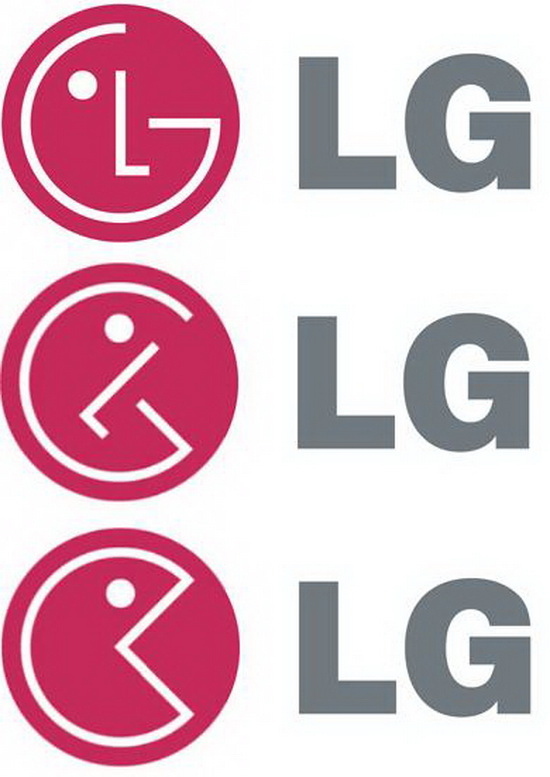Links and write-ups about beautiful things from around the web!
-
Powerpoint Makes Us Stupid
PowerPoint makes us stupid. It’s dangerous because it can create the illusion of understanding and the illusion of control. […] Some problems in the world are not bullet-izable. Gen. James N. Mattis of the Marine Corps, the Joint Forces commander, quoted in today’s New York Times article We Have Met the Enemy and He Is PowerPoint.
-
LG Pacman

WTFLG? Maybe my washing machine needs some power pellets.
(Originally from this Posterous post? It’s the earliest example I can find. Via Back of the Cereal Box)
-
Tom Waits on Fernwood 2 Night
Things I did not know: Tom Waits appeared on an episode of Fernwood 2 Night, playing The Piano Has Been Drinking before begging a couple of bucks off Martin Mull (he was trapped in the fictional town after his tour bus broke down). Crazy.
(Via Coudal)
-
Ebooks
At no point has it even occurred to me, until right now, that I’m in fact typing e-words or e-sentences. I’ve not thought about adding an e-carriage return to separate this e-paragraph from the next e-paragraph. From Brett McLaughlin’s post on O’Reilly Radar asking why publishers and vendors are still using the term e-books when it’s simply literary content that’s appearing on a different platform. You could also argue that the term book itself is beginning to get slippery. In any case, “ebooks” has been sounding dated for a while now, so I’ll give him that.
-
Pinball
It might feel like simple nostalgia at first, but pinball is more than that. Pinball is hyper-personal. A pinball machine invites you to shove quarters into it so that you can challenge this physical piece of hardware in a game that’s based on the best physics engine ever, physics itself. Simon Carless of GameSetWatch discovers the wonderment of pinball at the Pinball Hall of Fame in Las Vegas, one of my favorite places ever.
-
Akihabara
Nice-looking little HTML5 <canvas> 2D game engine and toolkit written in JavaScript. More and more the apps are moving to the browser and out of the land of plugins and standalone RIA clients.
-
Twombly
[Video no longer available]
As Seen on TV, a tribute to doing it wrong. I love this aspect of awful informercials, and in our household we’ve even coined a specific adjective to describe it: twombly. As in “No, no, don’t use your sewing machine on the curtains while they’re still hanging! You’re doin’ it all twombly!”
(Via Kottke)
-
Softening the edges
The first such Disney film I ever saw was Snow White, which added considerably to my experience of wonderful fear and terror, even though its heroine was a doll. This, I have been told, was because it was made by German refugees who had a sense of the darkness of the old stories. The film Bambi diminished the sense of real forests and creatures I had found in the book. The unbearable thing was the filming of the Jungle Books. Disney cartoons use the proportions of human baby faces – those wide eyes, those chubby cheeks we respond to automatically. The black hunting panther, the terrible strong snake, the wolf pack and its howl, the cringing tiger became dolls and toys like Pooh, Piglet and Eeyore, and some crucial imaginative space was irretrievably lost.
From AS Byatt’s essay in the Guardian about Alice’s Adventures in Wonderland / Through the Looking-glass, which offers some great insight into the difference between Lewis Carroll’s imagined spaces and narrative and those of other popular (later, 20th Century) fantasy stories for children.
-
Evil Eye
Face tracking Evil Eye by Nirav Patel. Simple webcam + projector combo (+ frosted ceiling light globe) using OpenCV and PyGame.
-
Guns That Look Like Toys

Baltimore Police Department: Guns That Look Like Toys. Not a lot of info on this one, and the police report is from a couple of years ago, but have the criminals finally figured out that the law requiring toy guns to be clearly painted in comical neon colors can work both ways? How come these all seem to have been painted by the same gun shop in Wisconsin?
On the flip side this reminds me of the Entertech uzi motorized water gun I had as a kid (check out this commercial – almost unthinkable now, but I remember having a lot of fun with it at the time). These were pretty much the last realistically-painted gun toys sold in large stores in America after legislation passed in many states in 1988 following multiple incidents of children being mistakenly shot and killed by the police. That cultural shift led into the Super Soaker generation, which is actually a pretty fascinating story in and of itself.
(Via Schneier on Security, who reports that there a posters warning about painted guns in the NYC subways currently)
